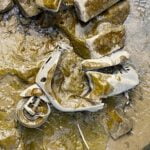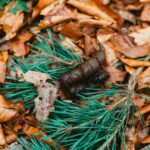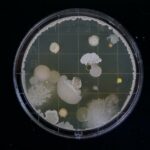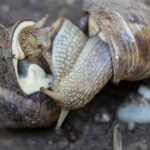Get ready to dive into the fascinating world of slime molds! In this article, we will unravel the mysteries and unveil the captivating secrets of these incredible organisms. From their unique characteristics to their intriguing behaviors, we will explore the extraordinary wonders of slime molds. Prepare to be amazed as we uncover interesting facts, share delightful anecdotes, and provide in-depth explanations that will demystify these often-overlooked organisms. So, join us on this mind-boggling journey as we embark on an exploration of the enchanting world of slime molds!

Interesting Facts About Slime Molds
Slime molds may not be the most well-known organisms, but their fascinating characteristics and behaviors are certainly worth exploring. Here are some interesting facts about these enigmatic creatures that will leave you awe-struck:
Slime Molds: The Mysterious Amoebas
Slime molds are a type of amoeba that can be found slithering over the ground and fallen tree trunks in search of food. But what sets them apart from other amoebas is their remarkable ability to come together and form multicellular structures known as fruiting bodies. These fruiting bodies release spores, similar to plants, which grow into new slime molds, allowing them to perpetuate their life cycle. It’s nature’s way of ensuring their survival.
“Slime molds may be microscopic, but their ability to create intricate and organized structures is truly remarkable.”
A Diverse and Ancient Group
Did you know that slime molds have existed for millions of years? In fact, a slime mold cast in amber has been found, indicating their presence at least 100 million years ago. With over 900 species, slime molds are an incredibly diverse group. From soils to leaf litter and rotten logs, you can find these organisms in various habitats, playing important roles in nutrient cycling and decomposition processes.
“Slime molds have stood the test of time, adapting and thriving in diverse environments for millions of years.”
Not Your Typical Fungi
While they were once classified as fungi, slime molds are now recognized as a separate group. They belong to the kingdom Protista and are considered a type of amoeba. However, their unique characteristics and behaviors set them apart from other amoebas, making them a fascinating subject of scientific study. Slime molds possess a primitive form of sexual reproduction, allowing them to exchange genetic material and diversify their offspring.
“Slime molds challenge our traditional classification systems, defying the boundaries of what we thought we knew about amoebas and fungi.”
The Wonders of Slime Mold Intelligence
Believe it or not, slime molds have a surprising level of intelligence. While they may not possess a brain like humans or animals, some slime molds exhibit memory and learning capabilities. In experiments, scientists have observed slime molds navigating mazes and finding the shortest routes to reach their food sources. They can even transfer this knowledge to other slime molds, making them adaptable and resourceful organisms.
“Slime molds may lack a brain, but their ability to learn and remember puts them in a league of their own.”
Benevolent and Harmless
Unlike some organisms that can be harmful to humans and animals, slime molds are harmless companions in the natural world. They primarily feed on bacteria and fungi, playing a vital role in decomposing organic matter and recycling nutrients. So, the next time you come across a slime mold in your lawn, soil, or a forest, remember that it’s just doing its part in the grand scheme of ecology.
“Slime molds are nature’s recyclers, silently working to break down and transform organic matter into valuable nutrients.”
Discovering the mysteries of slime molds is like delving into an uncharted realm. These unique organisms possess characteristics and abilities that continue to captivate scientists and nature enthusiasts alike. From their diverse species to their surprising intelligence, slime molds are a reminder of the wonders that await us in the natural world.
So, embrace the slimy trails and intricate structures left behind by these amoebas, and let the fascinating world of slime molds unravel before your eyes.
“Slime molds are a testament to nature’s creativity and ingenuity, showcasing the incredible diversity and complexity of life on our planet.”
Slime has taken the world by storm with its gooey texture and vibrant colors. But did you know that there are 10 fun facts about slime that you probably didn’t know? From its origins to its various uses, slime is more than just a toy for kids. If you’re curious to learn more, click here to uncover these fascinating facts about slime: 10 fun facts about slime. Don’t miss out on this opportunity to expand your knowledge and discover the intriguing world of slime!
Interesting Facts About Slime Molds
Did you know that slime molds possess fascinating properties? These peculiar organisms, often mistaken for fungi, possess incredible abilities that are sure to amaze you. From their unique appearance to their extraordinary behavior, slime molds are truly captivating. If you want to delve deeper into the enchanting world of slime molds, why not explore the astonishing life cycle of slime molds? Discover how these organisms transition from tiny spores to complex multicellular beings, adapting and surviving in their ever-changing environments.
Another intriguing aspect of slime molds is their ecological role. These incredible organisms play a crucial role in the delicate balance of ecosystems. You’ll be astounded by the diversity of environments in which slime molds thrive and contribute to the overall health of our planet. By clicking on the link, you’ll gain a deeper understanding of the ecological significance of slime molds.
So, whether you’re fascinated by the properties of slime molds or intrigued by their life cycle, there’s so much more to discover. Click on the links below to delve into the captivating world of slime molds:
- Fascinating Properties of Slime Molds
- The Life Cycle of Slime Molds
- The Ecological Role of Slime Molds
Embark on a journey of fascination and revelation as you explore the captivating realm of slime molds.
The Smartest Slime: Unlocking the Mysteries of Plasmodial Slime Molds
[youtube v=”k_GTIL7AECQ”]
Introduction:
In the depths of the forest, there exists a fascinating and rather inconspicuous creature known as the plasmodial slime mold. It may surprise you to know that you’ve probably encountered one of these remarkable organisms while hiking without even realizing it. Although they may not look like much at first glance, these slime molds possess a level of intelligence and problem-solving abilities that would make any expert scratch their head in wonder. In this article, we will explore the incredible world of these smart snot-like creatures and uncover the secrets behind their remarkable abilities.
The Beginning: Exploring Slime Mold Kindergarten
To truly understand the intricacies of slime molds, we must start at the beginning. In their early stages of life, slime molds resemble traditional molds. They begin as spores, and in a single microscopic droplet, thousands of them can be found. However, not all the spores are destined to survive, as some fall prey to snails or are dispersed by passing insects. The lucky ones that escape these voracious predators emerge as tiny amoeba-like creatures, complete with adorable googly eyes. Don’t let their cuteness fool you, though – these single-celled organisms possess incredible potential.
Unraveling the Genetic Code: The Power of Nuclei
Within the nucleus of these miniature creatures lies the key to their extraordinary abilities. Like scrolls of DNA, the chromosomes hold the secrets to creating all the parts of a slime mold. It’s akin to a book of spells, with each chromosome containing specific instructions for the mold’s development and growth. Interestingly, these amoebas possess the ability to transform their shape, growing elongated structures known as flagella when placed in water. These flagella enable them to move and capture food in their ever-adaptable forms. However, when the environment becomes arid, they can seamlessly revert to their original amoebic shape, as if they were dropped from a great height.
Life and Love: Fusing Cell By Cell
As social creatures, slime molds have evolved mechanisms to duplicate and combine their genetic materials. When two sexually compatible amoebas meet, they fuse together, resulting in the fusion of their nuclei. Now armed with double the genetic information, these merged cells possess two sets of “spells” within their nuclei. This process mirrors the fusion of sperm and egg cells in humans, marking the beginning of new life. However, the similarity ends here, as the subsequent division of cells takes a unique path in the world of slime molds.
Unity in Diversity: A Symphony of Contractions
While humans divide cells to create separate entities, slime molds embrace a different approach. With each nuclear division, the cell itself remains undivided, resulting in a cell housing multiple nuclei. This synchronous division of nuclei creates a plethora of genetic information, leading to an abundance of nuclei within a single cell. As these nuclei begin to produce specific proteins, reminiscent of muscle proteins found in humans, the proteins interlink, forming tubes capable of contracting. This contractile ability enables the slime mold to pulsate and squeeze its surroundings, reminiscent of breathing. The rhythmic contractions propel the movement of liquid through their tubular network, creating an illusion of the slime mold “breathing” when viewed at an accelerated speed.
Problem-Solving: The Intelligent Snot
Now that we’ve explored the fascinating features of slime molds, let’s delve into their impressive problem-solving capabilities. When faced with the challenge of finding food, slime molds employ a method that might seem bizarre, yet effective. If the food signal becomes stronger in one direction, they don’t blindly move towards it. Instead, they leave behind a trail of mucus, essentially creating an external map of where they’ve been. This mucus acts as a canceling agent for the food signal and prompts the slime mold to explore a new direction. This unique strategy allows them to navigate through mazes efficiently, opting for the shortest paths between different food sources.
Masters of Efficiency: Designing a Railway System
Inspired by the slime mold’s problem-solving prowess, scientists in Japan sought to test its capabilities further. They challenged the slime mold to design a railway system by placing food sources on a map representing various train destinations. The slime mold, akin to a low-budget Godzilla movie, navigated the map and, surprisingly, created pathways around natural obstacles that mimicked the actual railway system. They achieved this by creating a surface that led light through areas equivalent to the obstacles on the map. Since slime molds despise light, they avoided these areas, resulting in a network that perfectly mirrored the human-created railway system. This impressive feat showcased the slime mold’s ability to optimize efficiency without the burden of college debt.
A Nutritional Connoisseur: Sense of Taste and Preference
Beyond their problem-solving skills, slime molds exhibit a discerning palate when it comes to food. They prefer a diet rich in protein and some carbohydrates, avoiding salt entirely. Additionally, they possess a remarkable ability to blend two different food sources to create the perfect protein-to-carbohydrate ratio. This flexibility allows them to adapt to their environment, ensuring optimal nutrition. Surprisingly, these intelligent slime molds can even learn to traverse surfaces coated in salt, an aversion they typically possess. Through exposure and adaptation, they overcome their past dislike and traverse the salty surface with ease, showing a remarkable capacity for learning.
Knowledge Sharing: The Vulcan Mind Meld
Perhaps one of the most remarkable aspects of slime molds is their ability to share knowledge with each other. When two slime molds fused together possess different sets of knowledge, they transfer their respective insights to each other, effectively sharing what they’ve learned. This phenomenon highlights the slime mold’s exceptional communication abilities and its capacity for collective problem-solving. It’s as if they possess the ability to engage in a Vulcan mind meld, effortlessly exchanging information and expanding their problem-solving potential.
Life and Death: The Final Act
As the slime mold progresses through its life cycle, it eventually reaches a stage where it becomes large enough to produce offspring. With millions of nuclei within its core, the slime mold undergoes one final division. However, instead of creating identical copies of its genetic material, the nuclei divide and distribute the genetic material amongst themselves. This splitting process resembles a divorced couple dividing their books and video games, resulting in the formation of hardy spores – the future generation of slime molds. These spores weave intricate lattices and structures before being carried away by the wind or devoured by snails. In this cycle of birth and death, the slime mold’s life ends, but its legacy lives on.
Conclusion:
The world of plasmodial slime molds is one filled with intrigue and mystery. From their humble beginnings as spores in the forest to their extraordinary problem-solving abilities, these intelligent snot-like creatures inspire awe and amazement. While they may appear insignificant, their unique skills showcase the boundless possibilities of life on Earth. As we continue to explore the wonders of nature, let us not overlook the incredible intelligence and resilience of these slime molds, showing us that true intelligence comes in all shapes and forms.

FAQ
Q: What are slime molds?
A: Slime molds are a type of amoeba that slither over the ground and fallen tree trunks in search of food. They are not a monophyletic group, meaning they have evolved multiple times independently.
Q: How do slime molds reproduce?
A: Slime molds scatter spores, similar to plants, which grow into new slime molds. They also have a primitive form of sexual reproduction.
Q: Are slime molds harmful to humans and animals?
A: No, slime molds are harmless to humans and animals. They primarily feed on bacteria and fungi.
Q: How diverse are slime molds?
A: There are over 900 species of slime molds, making them very diverse. They can be found in soils, leaf litter, and rotten logs.
Q: Can slime molds learn and remember?
A: Yes, some slime molds can remember and learn, allowing them to transfer knowledge.
- Discover Coffeeville, MS: A Small Town Rich in History and Grenada Lake Charm - November 25, 2024
- Discover Sabetha, KS: A Guide to Community, History, and Local Attractions - November 25, 2024
- Cornersville, Tennessee: A Crossroads of History and Southern Charm - November 25, 2024















